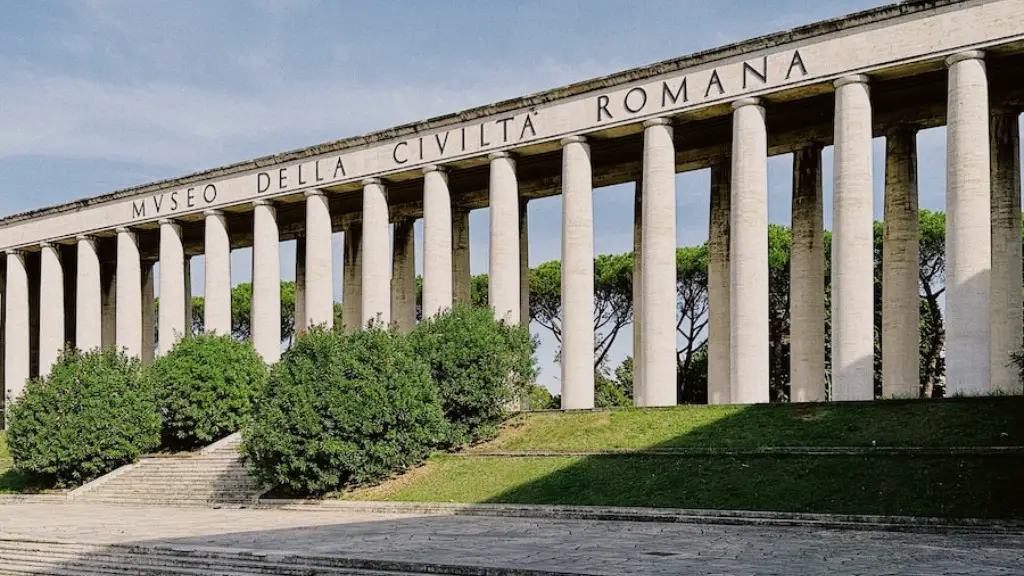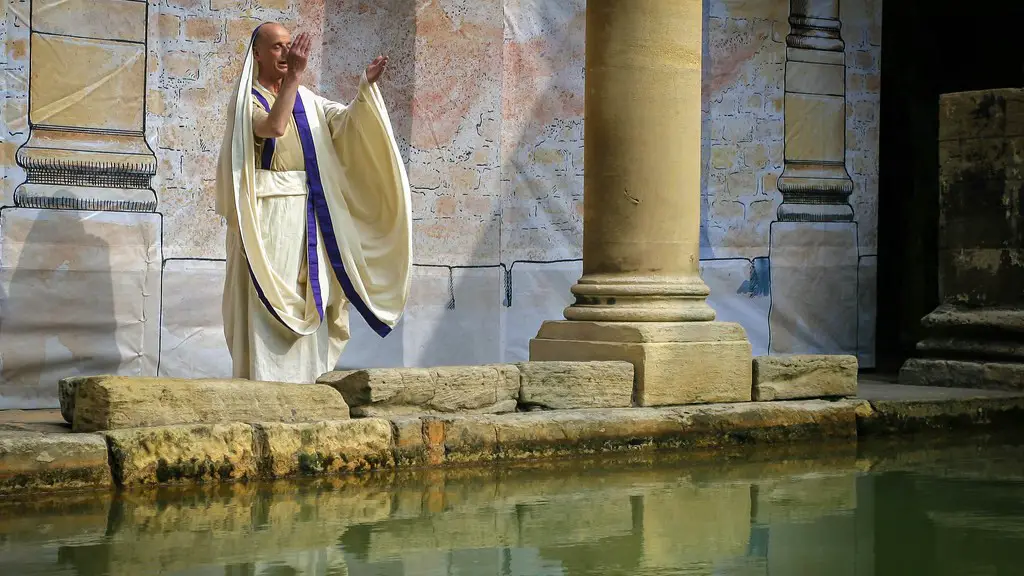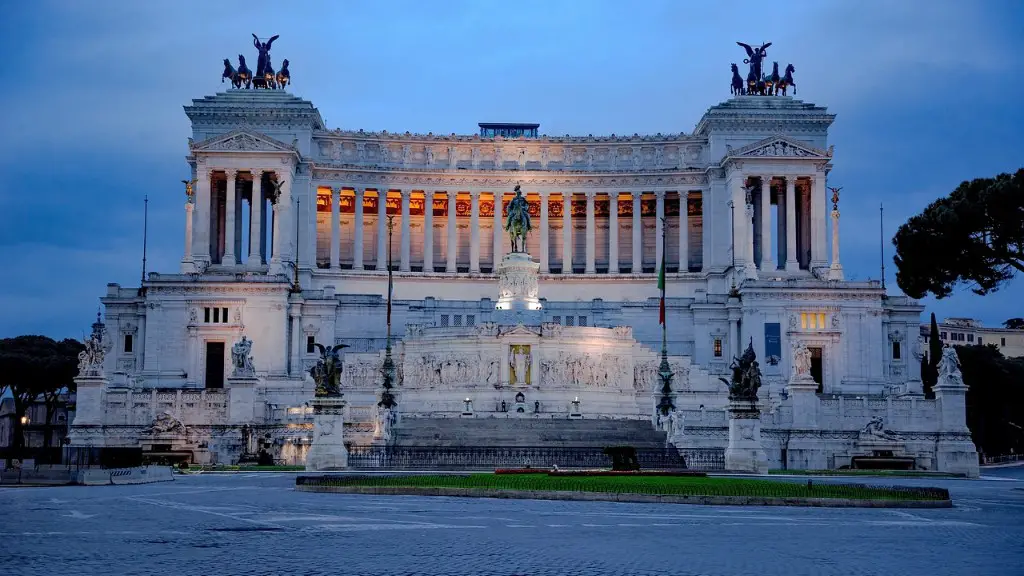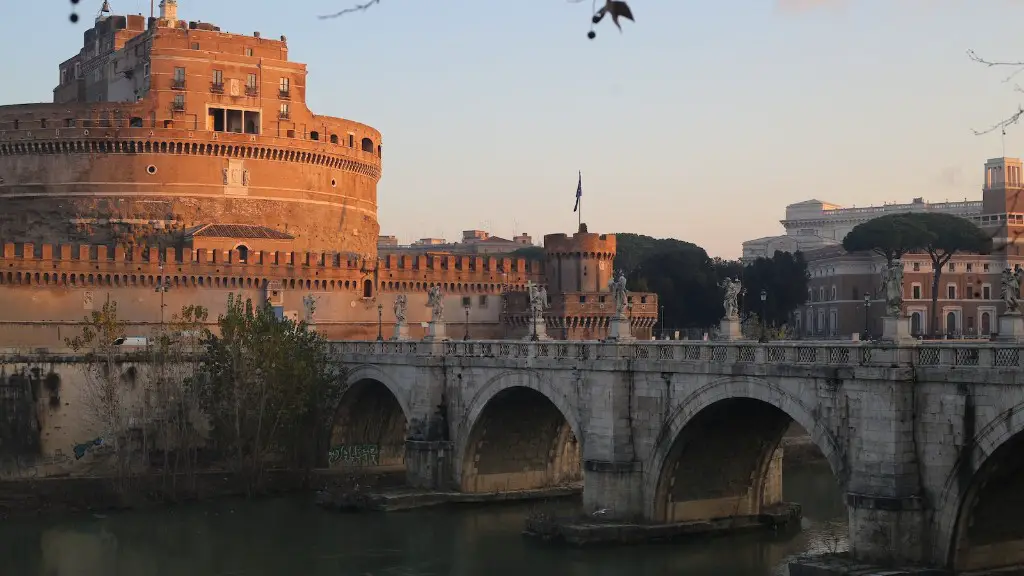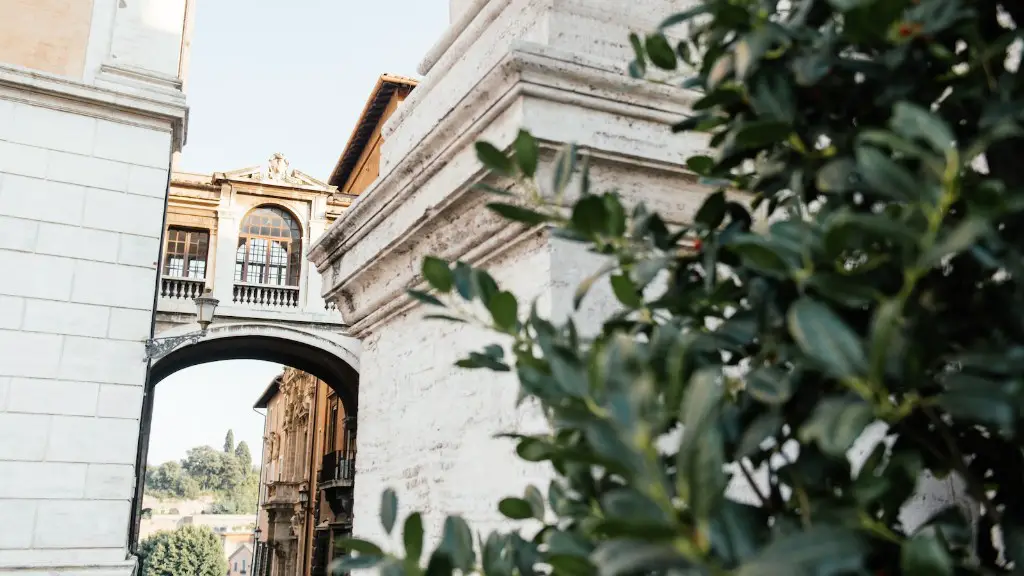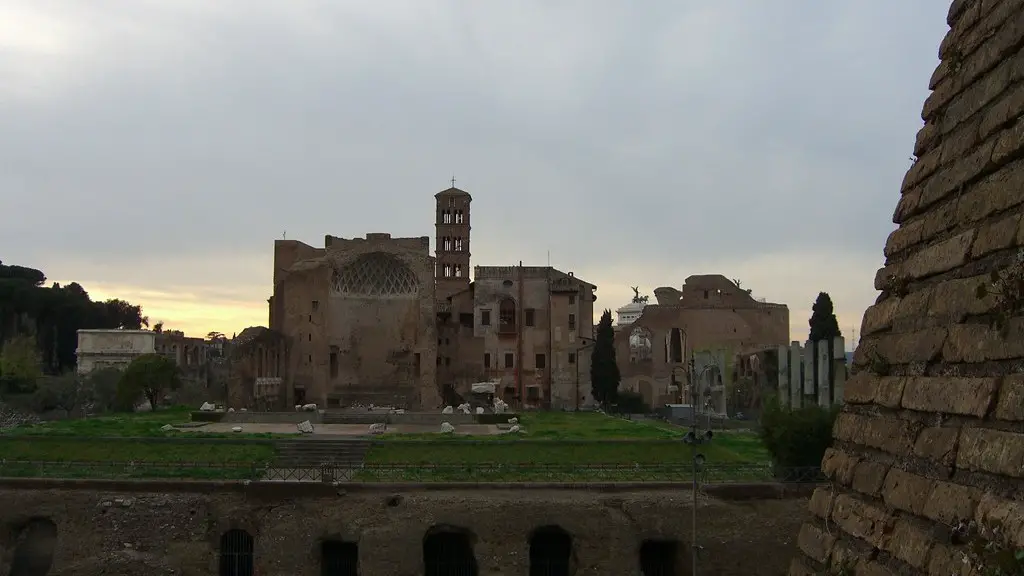Social Structure of Ancient Rome
Ancient Rome was a society with a basic social structure that originated during the period of the Roman Republic. Its core was the patrician aristocracy and the plebeian commoners formed the lower classes. Social classes saw a complex organization of various groups, with the senatorial and equestrian classes at the top, and freedmen and slaves at the bottom.
Roman society was primarily based on four main economic classes. There were the slaves, freedmen and colonies, the plebeians and the patricians. The patricians were part of the upper class, and included the wealthy aristocrats and government officials. They controlled most of the political, economic and religious life of the Roman state. The plebeians, who were the lower class, were the majority of the Roman population. They comprised the tradespeople, merchants, peasants and soldiers. The slaves were owned by the patricians and were the most oppressed class of Roman society. The freedmen were former slaves who had been granted their freedom.
Within the upper classes there were two distinct social classes: the senatorial class, also known as the nobiles, and the equestrian class. The senatorial class was composed of the most affluent members of Roman society. They included senators, members of the high magistracy, generals, religious officials and landowners. The equestrian class was a bit lower on the social ladder, but still enjoyed considerable privilege and power. They included businessmen, bankers and provincial officials.
Though social classes in Ancient Rome were rigid and there was a clear sense of hierarchy, a wealthy and enterprising individual could, with some luck, amass considerable wealth and prestige. Slaves who earned their freedom could even become members of the equestrian class. This was, of course, a difficult feat to achieve, but it was not impossible, especially for those with skill and ambition.
1The distinction between the classes was very clear in Ancient Rome and the social structure was dictated by various factors such as birth, wealth and occupation. The patricians and senatorial class enjoyed a great deal of privileges, including access to education and the right to vote in the political assemblies. Those with higher economic status were able to afford luxuries that the lower classes could not, including hunting and entertainment.
The social structure of Ancient Rome operated around a system of patronage and clientage. The upper classes would make use of lower-class services, such as manual labour and military services. This system was important to both the patrons and their clients. The patrons secured the loyalty of their clients through various social and economic benefits, while on the other hand the clients secured their safety and protection from their patrons.
Military Ranks
The military ranks of Ancient Rome were divided into six main classes: the centurion, prefect, tribune, decurion, specialist and legionnaire. The highest rank was the centurion, followed by the prefect and tribune. These were the most important military officials, and held immense power and influence in Ancient Rome. The decurion, specialist and legionnaire were the lower military ranks. The decurions and specialists were mostly in charge of managing the troops, while the legionnaires were the ordinary soldiers.
The military played an important role in Ancient Roman society, and was highly respected in the upper classes. Generals and commanders often held considerable power and prestige. The military was made up of both professional and conscripted soldiers, and was divided into legions and cohorts. The main task of the military was to protect and defend the Roman state. It was also used to subjugate foreign territories and enforce the will of the Roman Senate.
The military was organized into various ranks and positions in Ancient Rome. Centurions and prefects were the highest military officers and commanded large units. Tribunes served as staff officers and were typically second in command to the centurion. The decurions, specialists and legionnaires were the lower ranking officers and served as the main fighting force of the army.
Officers and enlisted personnel had distinct roles to play in Ancient Roman society. The vestments of the officers revealed their rank and status, as well as their rank and seniority. Officers had the authority to administer and enforce regulations, punishments and rewards. The enlisted personnel had the responsibility to obey orders without question and carry out their duties efficiently.
Division of Classes and Wealth
Wealth was a major factor in the social structure of Ancient Rome. The upper classes were very wealthy, while the lower classes were very poor. This inequality was based on the inheritance of property and the accumulation of wealth through business and trade. Even within the upper classes there were differences in wealth and status.
The wealthy members of the Roman aristocracy made use of their wealth to gain political and economic power. This allowed them to further monopolize key resources and consolidate their power. The upper classes had a huge influence over the lower classes through their control of the economy and politics. This in turn maintained their privileged lifestyle and enabled them to dominate certain areas of Ancient Roman society.
The lower classes had very little freedom to advance financially or socially. Life was hard for them, and they had to struggle to survive. They were often exploited by the wealthy upper classes and had to take whatever jobs were available to them. Despite their poverty, the lower classes were an important part of Roman society and often served as the backbone of its economy.
Family Structure
The family was at the center of Ancient Roman society, and its structure was largely based on the patriarchal system. Fathers had ultimate authority in the family, while the mother was expected to care for the household and children. Sons were given the greatest level of respect and were expected to look after their elderly parents. Daughters were less well-respected but still had rights in the family.
The extended family was also important in Ancient Roman society, and the family structure was based around the idea of extended kinship. In the extended family, parents, siblings, uncles, aunts, cousins and other relatives could all play an important role. The extended family members were expected to look after each other and ensure the extended family was kept together.
The family was a major source of support and security in Ancient Rome, and generational continuity was a prized value. The elderly were treated with great respect and were expected to take part in decision making. The family was also a powerful source of social capital and served as a basis of loyalty and identity.
Religious Beliefs
Religion was an important part of Ancient Roman society. The pantheon of Roman gods was headed by the ruling deity, Jupiter, and there were several important gods in the pantheon. The gods were given certain traits and roles in order to make them easier to relate to by the Romans. Roman religion was polytheistic, and worshippers placed offerings, prayers and sacrifices to the gods for prosperity, luck and protection.
The state religion of Ancient Rome was a major force in the social structure. Death and taxes were seen as the two most important powers of the Roman state and were regulated by religious laws and rituals. The official religion of Rome provided a source of identity and cohesion. It was also used to legitimize the imperial rule of the Senate and its various leaders.
Religious beliefs affected both family and social life in Ancient Rome. Religion was used to support the idea of hierarchical social structures, with the patricians and senatorial class at the top, and the plebeians and slaves at the bottom. Religion was also used to maintain order and ensure the proper functioning of the state.
Cultural Life and Leisure
Cultural life and leisure activities played an important role in Ancient Rome. Roman culture was heavily influenced by the Greeks and was composed of a variety of different elements. Roman literature, art and architecture had a great influence on the later development of Western civilization. Roman culture was also highly eclectic, and this was expressed in its art and literature.
The Roman elite had access to a wide range of leisure activities. These included the theater, gladiatorial games and chariot racing. These activities served as a form of entertainment and distraction from the everyday rigors of life. The wealthy classes also had access to more elaborate forms of entertainment, such as banquets and private parties.
Leisure activities also played an important role in Roman society, as they provided a way for the lower classes to get a respite from the hardships of life. Everyday activities such as attending festivals and participating in sporting events were popular forms of entertainment. Gambling and betting were also popular in Ancient Rome, and the populace was often seen flocking to the Colosseum to witness great spectacles such as gladiatorial fights and chariot races.
Conclusion
Ancient Roman society was structured around a complex hierarchy which was defined by birth, wealth and occupation. The upper classes enjoyed a great deal of privilege and power, while the lower classes were oppressed and exploited. Religion, culture and leisure activities had a great influence on the social structure of Ancient Rome, giving people something to aspire to and providing them with a sense of identity and belonging.
